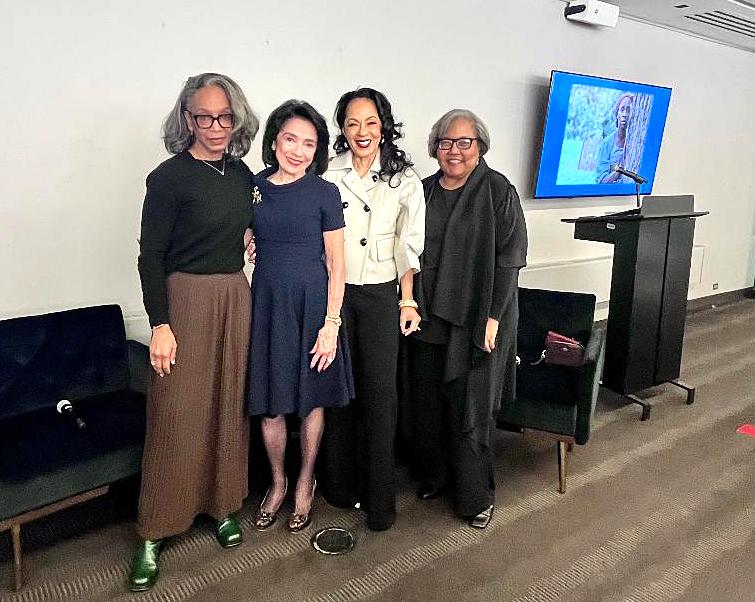
Robin Givhan, Dr. Joyce Brown, Debra Martin Chase, Julieanna Richardson – all photos Marilyn Kirschner
The Social Justice Center at FIT (SJC), launched in 2021, is a pioneering higher education initiative. Its transformative mission is to revolutionize the creative industries and confront the systemic challenges faced by BIPOC youth, college students, and professionals in these fields, inspiring hope and optimism for a more inclusive future.
Last June, they held a summer luncheon featuring a conversation between FIT President Dr. Joyce Brown and Bakari Sellers, a CNN Political Analyst, former rep from South Carolina, author, and one of the nation’s most influential African Americans.
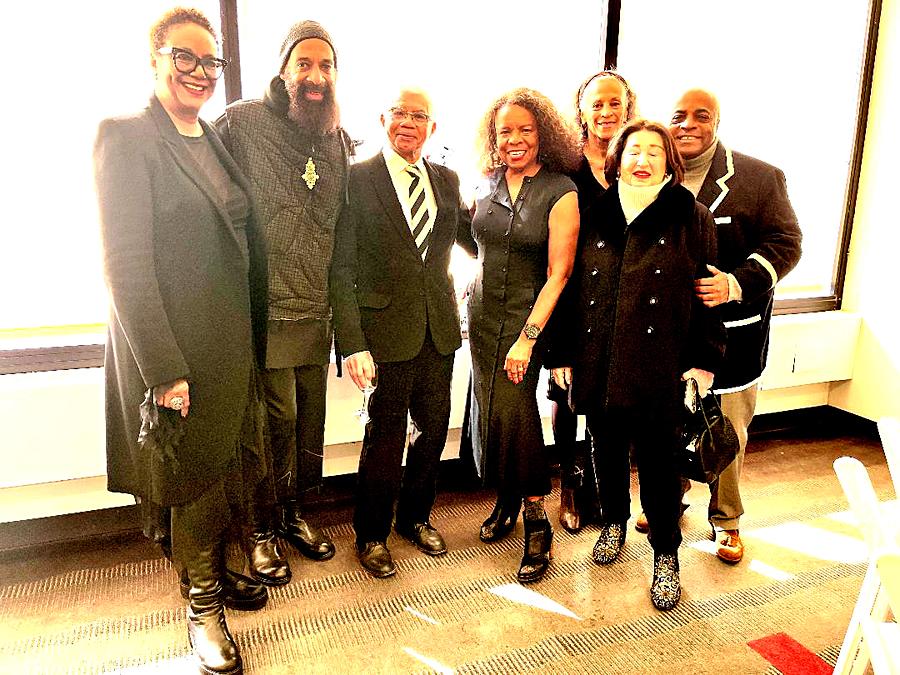
Harriett Cole, Epperson, Freddie Leiba, Teri Agins, Alva Chinn, Nicole Fischelis, Jeffrey Banks
On Wednesday, perfectly timed with Black History Month, they followed up with a winter lunch, panel discussion, and conversation once again held at FIT’s David Dubinsky Student Center. The goal was to explore “The Power of Imagery,” both positive and negative, and how it shapes our place in the world.
As Dr. Browne observed, “A picture is worth 1000 words.” The powerful imagery from George Floyd’s killing in 2020 was not only a catalyst for social change in the United States; it was the inspiration behind the founding of the SJC.
The panel featured Robin Givhan, Pulitzer Prize winner and senior critic at large for The Washington Post; Julieanna Richardson, founder and president of The HistoryMakers and recipient of Black Enterprises’ Legacy Awards; and Debra Martin Chase, an Emmy-nominated Tony Award-winning producer and CEO of Debra Martin Chase Productions. As they talked, changing images related to their stories and lives were projected on the wall behind them.
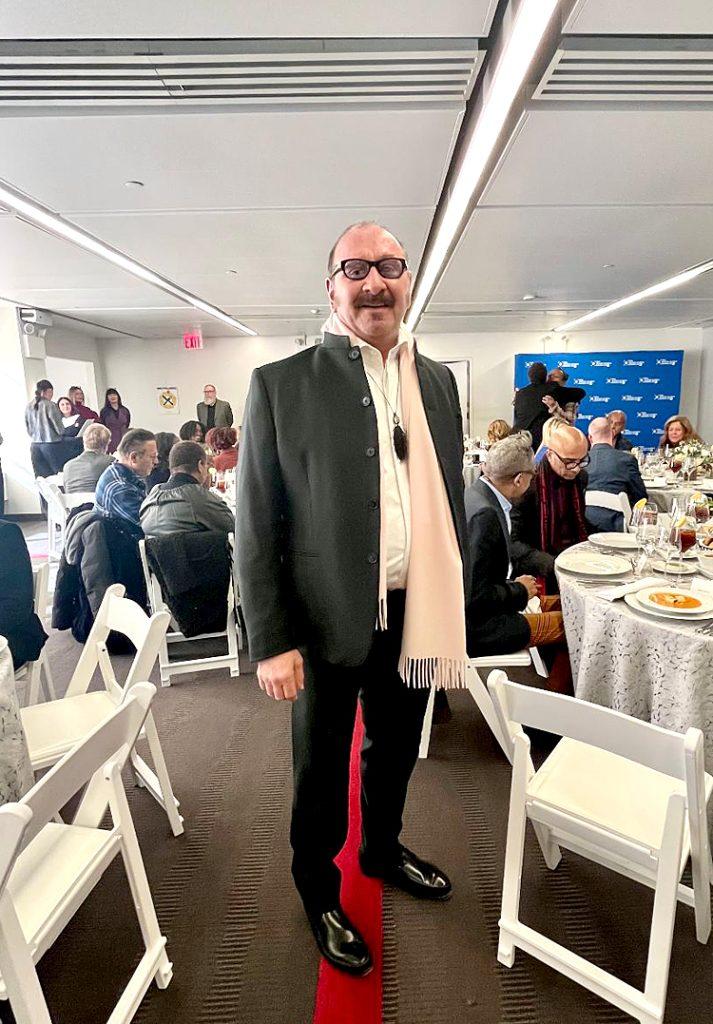
Ralph Rucci
Ralph Rucci, Jeffrey Banks, Epperson, Harriett Cole, Ese Azenabor, Marisol Deluna, Frederick Anderson, B Michael, Mark Anthony, Debra Roberts, Rebecca Moses, Fern Mallis, Constance White, Nicole Fischelis, Alva Chinn, Charles Blow, Nancy Chilton were among the 75 guests who enjoyed a lunch of cream of tomato soup and chilled chicken paillard while listening to three accomplished women discuss the power of imagery.
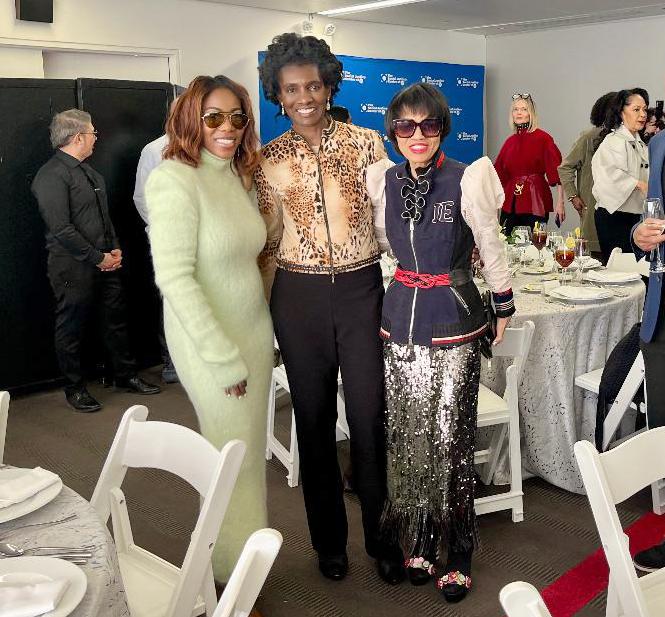
Tiffany Reid, Constance White, and Debra Ginyard
Dr. Brown said she was purposely steering the conversation away from present-day politics “and the dark, dangerous times we find ourselves in.” Even though Dr. Brown noted that it’s frightening and troubling to be sure and there is a pervasive sense of powerless that “sucks the oxygen out of the air,” she was not going that route but instead exploring the power they do have, and imagery plays a large part.
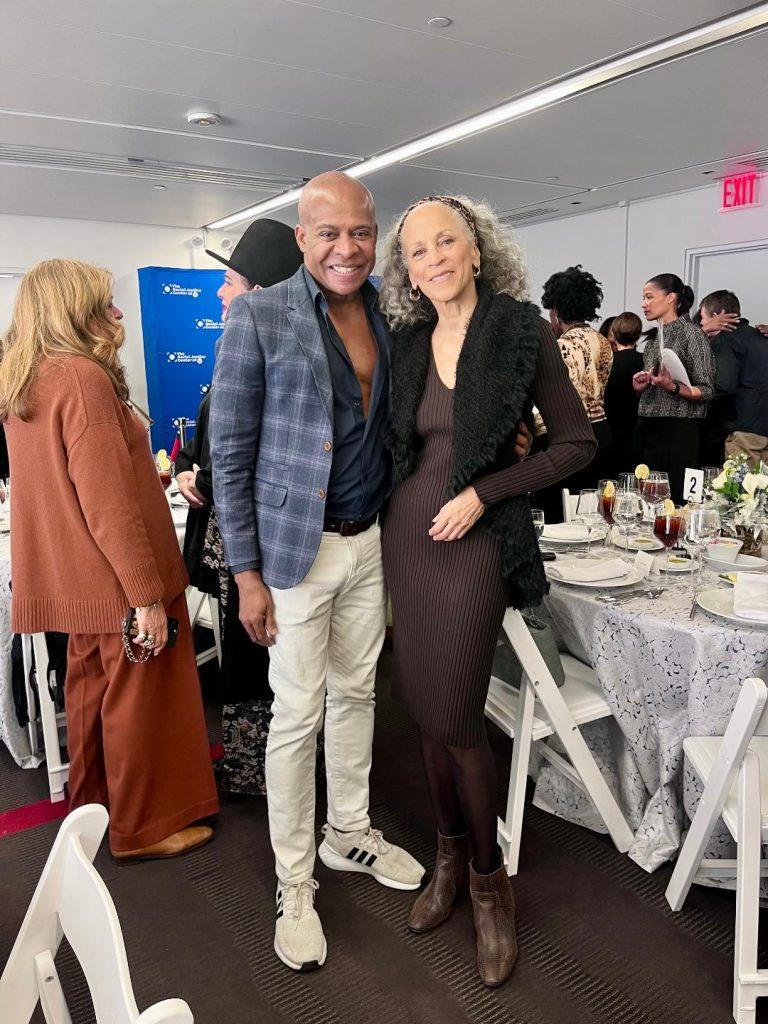
Frederick Anderson and Alva Chinn
“I’ve been a movie fanatic since I was a child, and my images of the world were shaped by what I saw on the screen. I want to do my part to see that Blacks are not only represented in film but also enhance it.” – Debra Martin Chase, CEO, Debra Martin Chase Productions.
Film, TV, and theater producer Debra Martin Chase graduated from Mount Holyoke College and earned her Law Degree from Harvard. She was a corporate lawyer before heading to Hollywood. Debra is the first Black female producer and filmmaker, male or female, to have a movie deal in any studio and the first, male or female, to have a film that grossed over $100 million.
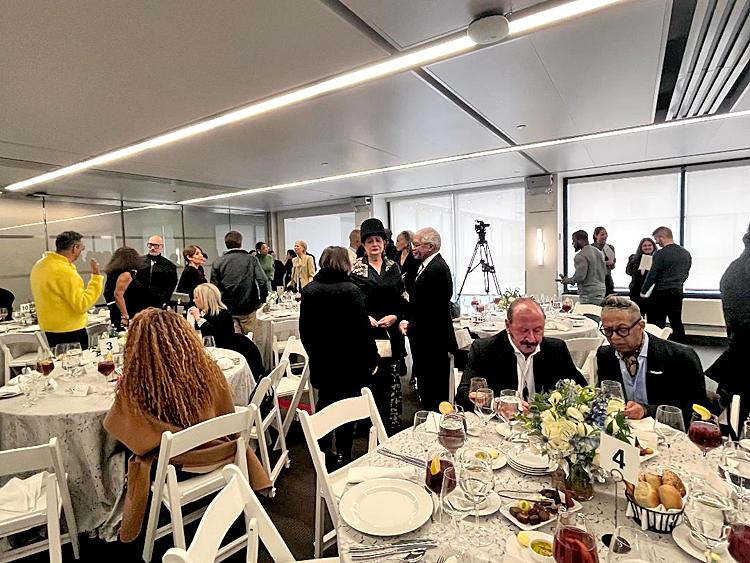
Atmosphere
As she got older, Ms. Chase realized the power of imagery. Growing up, she didn’t see people who looked or felt like her. Debra’s father was a huge TV and film buff. In those days, everything was stereotypical, and she wanted to change that and to change the industry.
“We all have the power to be what we want if we have a vision and work hard.” Debra says it’s important to remember that you have the power to make a difference regardless of your circumstances, and this theme runs through all her movies.
As a Black woman in Hollywood, Debra always strives to tell new stories, create new images, and challenge the status quo, but it’s a fight every time. The most rewarding part of what Ms. Chase does is having young men and women tell her how much Cinderella or The Cheetah Girls means to them. FYI, Disney turned down Cheetah Girls because they said the characters weren’t real.
As for DEI, Ms. Chase says that for her, it’s about equal opportunity. “I don’t want to be handed anything. I just want a fair shot to succeed.”
Julieanna L. Richardson is an American Harvard-trained lawyer (she and Debra were schoolmates) and the founder and executive director of The HistoryMakers, a nonprofit preserving archival collections of African-American video oral histories.
Julieanna records the lived experiences of Black men and women who have made significant contributions to American life, some more famous than others. Dr. Brown is one of them. So are several others in the room who were asked to stand.
“You can’t tell stories if you can’t see the images that bring the people alive: Julieanna L. Richardson, Founder and Executive Director, The HistoryMakers.
Julieanna’s biggest fear is that her ancestors’ history will be lost. She is a woman with a dream and a mission to ensure that Black cultural history lives on. Preservation is key. Ms. Richardson wants a permanent record of the Black experience. She wants people to understand the diversity, value, beauty, and humanness of being Black.
Julieanna joked that when she first mentioned her idea of founding HistoryMakers, an archive of Black people, and that it would cost $36 million, her friends were so concerned they staged an intervention. She persevered and raised the money.
When Ms. Richardson started HistoryMakers, she needed to videotape people so you wouldn’t have to guess what they looked like. She wanted people to see the laughter, the twinkle in their eyes.
One of the world’s premier cultural and fashion journalists, Princeton graduate Robin Givhan, who received her MA from the University of Michigan, was recently appointed Senior Critic-at-Large at The Washington Post. Robin uses the power of words to create word pictures and images, and she believes that is possible to alter the perception of what is seen through imagery.
Dr. Brown notes that Ms. Givhan’s work with the Obamas and Michele, in particular, gave America an insider’s view of the first African American First Family.
Only one Pulitzer Prize has been awarded for fashion criticism — to Robin Givhan of The Washington Post in 2006. Her entry consisted of 10 fascinating looks at how people dressed. The Pulitzer Prize Board cited Givhan “for her witty, closely observed essays that transform fashion criticism into cultural criticism.”
Robin explains that she became enamored by the power of storytelling early on. When she started, she knew nothing about fashion but became fascinated after covering runway shows, which went by so quickly that you couldn’t digest anything. “It taught me that you can learn so much from seeing an image.
The longer you have the image, the more it tells a story,” opines Ms. Givhan, who briefly worked at Vogue and hopes to write a memoir about that time.
“99% of the time when I look at images, it comes down to power. Who has it, who doesn’t? Who is at the top of the food chain? Who is at the bottom.” – Robin Givhan, Senior Critic-at-Large, The Washington Post
Robin spoke about one powerful picture, Hair Like Mine, that hung in the White House for years. It is Peter Souza’s 2009 photograph of a five-year-old child, Jacob Philadelphia, touching the head of Barack Obama, then president of the United States. Obama bent down to allow Philadelphia to touch his hair after the boy asked whether Obama’s hair was similar to his own afro-textured hair.
Time called the image “iconic,” and First Lady Michelle Obama later described it as symbolizing progress in the African-American struggle for civil rights.
When Robin made the leap from writing about fashion to writing more expansively about politics and art, she realized that the same lessons she learned in covering fashion could also be applied to those areas.
Fashion taught Robin how to read visual language and recognize that all those little details are part of telling a story. They are details that people consciously or unconsciously create to form their own vision of themselves as they walk out the door, and in many ways, they explain the way we relate to each other.
Robin looked chic and understated in her black sweater, chocolate brown pleated maxi skirt, and square-toed bottle green boots. I forgot to ask what message she was sending.
